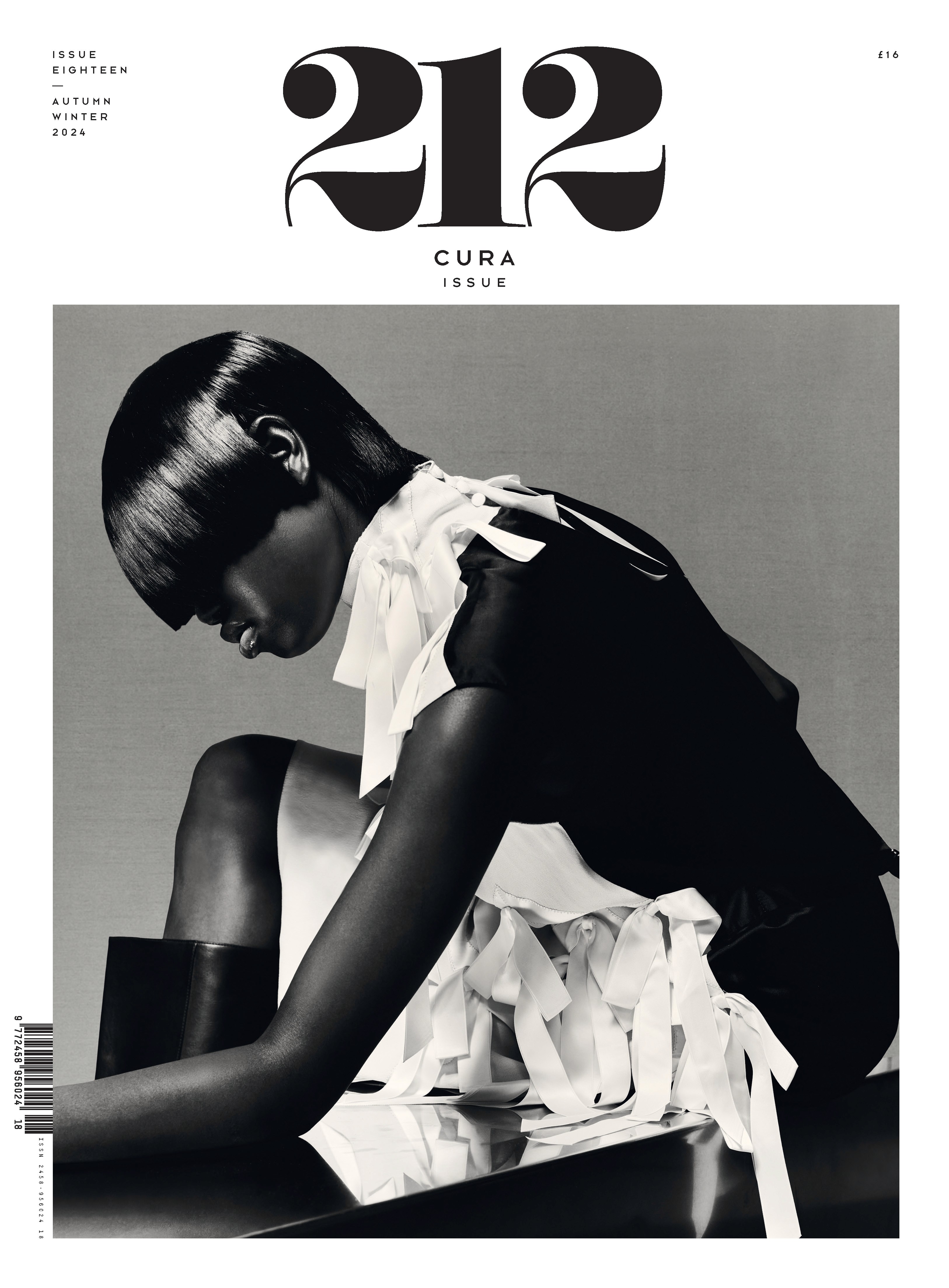

One of the definitions of art mentions a mere signature with the date. About 50 years ago, one of the hot topics on the art scene was also the frequently-quoted title of Linda Nochlin’s book. ‘Why Have There Been No Great Women Artists?' was one of the main criticisms of the period which coincided with Cindy Sherman’s days at SUNY Buffalo State University between 1972 and 1976. In the decades that followed, Sherman’s unique interpretation of the issues she focused on, her productions, the questions she obsessed about, her pursuits and her red lines were clear signs of her enduring influence, a testament to her greatness as an artist.
TEXT BY DENİZ AYTEKİN & SILA DEMİRAL
Born in 1954 in Glen Ridge, New Jersey, Cindy Sherman lives and works in New York NY. Her ground-breaking photographs have interrogated themes around representation and identity in contemporary media for over four decades. Coming to prominence in the late 1970s with the Pictures Generation group alongside artists such as Sherrie Levine, Richard Prince and Louise Lawler, Sherman studied art at Buffalo State College in 1972 where she turned her attention to photography. In 1977, shortly after moving to New York, Sherman began her critically acclaimed Untitled Film Stills. A suite of 69 black and white portraits, Untitled Film Stills sees Sherman impersonate a myriad of stereotypical female characters and caricatures inspired by Hollywood pictures, film noir, and B movies. Using a range of costumes, props and backdrops to manipulate her own appearance and to create photographs resembling promotional film images, the series explores the tension between artifice and identity in consumer culture which has preoccupied the artist’s practice ever since.
Sherman continued to channel and reconstruct familiar personas known to the collective psyche, often in unsettling ways. In 1981, the artist created her Centerfolds, a series of photographic double spreads inspired by men’s erotic magazines. Originally commissioned by Artforum, the spreads were subsequently pulled for fear of backlash. Tightly cropped and shot in color, Sherman’s images show her characters in vulnerable and ambiguous states. By the mid to late 1980s, the artist’s visual language began to explore the more grotesque aspects of humanity through the lens of horror and the abject, as seen in works such as Fairy Tales (1985) and Disasters (1986-89). These highly visceral images saw the artist introduce visible prostheses and mannequins into her work, which would later be used in series such as Sex Pictures (1992) to add to the layers of artifice in her constructed female identities. Like Sherman’s use of costumes, wigs, and makeup, their application would often be left exposed. Her renowned History Portraits begun in 1988 used these theatrical effects to break, rather than uphold, any sense of illusion.
One of the definitions of art mentions a mere signature with the date. About 50 years ago, one of the hot topics on the art scene was also the frequently-quoted title of Linda Nochlin’s book. ‘Why Have There Been No Great Women Artists?' was one of the main criticisms of the period which coincided with Cindy Sherman’s days at SUNY Buffalo State University between 1972 and 1976. In the decades that followed, Sherman’s unique interpretation of the issues she focused on, her productions, the questions she obsessed about, her pursuits and her red lines were clear signs of her enduring influence, a testament to her greatness as an artist.
TEXT BY DENİZ AYTEKİN & SILA DEMİRAL
Born in 1954 in Glen Ridge, New Jersey, Cindy Sherman lives and works in New York NY. Her ground-breaking photographs have interrogated themes around representation and identity in contemporary media for over four decades. Coming to prominence in the late 1970s with the Pictures Generation group alongside artists such as Sherrie Levine, Richard Prince and Louise Lawler, Sherman studied art at Buffalo State College in 1972 where she turned her attention to photography. In 1977, shortly after moving to New York, Sherman began her critically acclaimed Untitled Film Stills. A suite of 69 black and white portraits, Untitled Film Stills sees Sherman impersonate a myriad of stereotypical female characters and caricatures inspired by Hollywood pictures, film noir, and B movies. Using a range of costumes, props and backdrops to manipulate her own appearance and to create photographs resembling promotional film images, the series explores the tension between artifice and identity in consumer culture which has preoccupied the artist’s practice ever since.
Sherman continued to channel and reconstruct familiar personas known to the collective psyche, often in unsettling ways. In 1981, the artist created her Centerfolds, a series of photographic double spreads inspired by men’s erotic magazines. Originally commissioned by Artforum, the spreads were subsequently pulled for fear of backlash. Tightly cropped and shot in color, Sherman’s images show her characters in vulnerable and ambiguous states. By the mid to late 1980s, the artist’s visual language began to explore the more grotesque aspects of humanity through the lens of horror and the abject, as seen in works such as Fairy Tales (1985) and Disasters (1986-89). These highly visceral images saw the artist introduce visible prostheses and mannequins into her work, which would later be used in series such as Sex Pictures (1992) to add to the layers of artifice in her constructed female identities. Like Sherman’s use of costumes, wigs, and makeup, their application would often be left exposed. Her renowned History Portraits begun in 1988 used these theatrical effects to break, rather than uphold, any sense of illusion.
One of the definitions of art mentions a mere signature with the date. About 50 years ago, one of the hot topics on the art scene was also the frequently-quoted title of Linda Nochlin’s book. ‘Why Have There Been No Great Women Artists?' was one of the main criticisms of the period which coincided with Cindy Sherman’s days at SUNY Buffalo State University between 1972 and 1976. In the decades that followed, Sherman’s unique interpretation of the issues she focused on, her productions, the questions she obsessed about, her pursuits and her red lines were clear signs of her enduring influence, a testament to her greatness as an artist.
TEXT BY DENİZ AYTEKİN & SILA DEMİRAL
Born in 1954 in Glen Ridge, New Jersey, Cindy Sherman lives and works in New York NY. Her ground-breaking photographs have interrogated themes around representation and identity in contemporary media for over four decades. Coming to prominence in the late 1970s with the Pictures Generation group alongside artists such as Sherrie Levine, Richard Prince and Louise Lawler, Sherman studied art at Buffalo State College in 1972 where she turned her attention to photography. In 1977, shortly after moving to New York, Sherman began her critically acclaimed Untitled Film Stills. A suite of 69 black and white portraits, Untitled Film Stills sees Sherman impersonate a myriad of stereotypical female characters and caricatures inspired by Hollywood pictures, film noir, and B movies. Using a range of costumes, props and backdrops to manipulate her own appearance and to create photographs resembling promotional film images, the series explores the tension between artifice and identity in consumer culture which has preoccupied the artist’s practice ever since.
Sherman continued to channel and reconstruct familiar personas known to the collective psyche, often in unsettling ways. In 1981, the artist created her Centerfolds, a series of photographic double spreads inspired by men’s erotic magazines. Originally commissioned by Artforum, the spreads were subsequently pulled for fear of backlash. Tightly cropped and shot in color, Sherman’s images show her characters in vulnerable and ambiguous states. By the mid to late 1980s, the artist’s visual language began to explore the more grotesque aspects of humanity through the lens of horror and the abject, as seen in works such as Fairy Tales (1985) and Disasters (1986-89). These highly visceral images saw the artist introduce visible prostheses and mannequins into her work, which would later be used in series such as Sex Pictures (1992) to add to the layers of artifice in her constructed female identities. Like Sherman’s use of costumes, wigs, and makeup, their application would often be left exposed. Her renowned History Portraits begun in 1988 used these theatrical effects to break, rather than uphold, any sense of illusion.

is a large format international biannual magazine from Istanbul. Focusing on arts, culture and society, each issue tackles various universal subjects within a distinct theme.
Address
Karaköy Tarihi Un Değirmeni Binası, Kemankeş Mahallesi, Ali Paşa Değirmen Sokak 16, 34425, Karaköy Istanbul, Turkey
+90 212 232 4288
contact@212magazine.com

is a large format international biannual magazine from Istanbul. Focusing on arts, culture and society, each issue tackles various universal subjects within a distinct theme.
Address
Karaköy Tarihi Un Değirmeni Binası, Kemankeş Mahallesi, Ali Paşa Değirmen Sokak 16, 34425, Karaköy Istanbul, Turkey
+90 212 232 4288
contact@212magazine.com

is a large format international biannual magazine from Istanbul. Focusing on arts, culture and society, each issue tackles various universal subjects within a distinct theme.
Address
Karaköy Tarihi Un Değirmeni Binası, Kemankeş Mahallesi, Ali Paşa Değirmen Sokak 16, 34425, Karaköy Istanbul, Turkey
+90 212 232 4288
contact@212magazine.com

